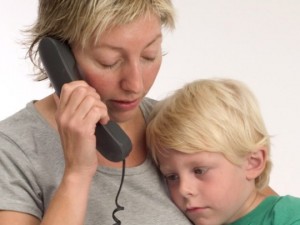A febrile seizure is a convulsion in a child that can be caused by high body temperature usually due to infection. Febrile seizure is a response of the brain to fever usually on the first day.
Febrile seizure is classified as simple or complex. The most common type of seizure which is the simple febrile seizure can last for a few seconds to 15 minutes. It does not recur within 24 hours and affects all parts of the body. A complex febrile seizure lasts for 15 minutes and happens several times within 24 hours and affects one side of the body.
Symptoms of a febrile seizure

- It can be mild or severe shaking or tightening of the muscles
- Fever of 100.4 F
- Shaking or jerking arms and legs
- Loss of consciousness
- Vomiting
- Stiff neck
- Severe sleepiness
- Difficulty breathing
Causes
- A high body temperature
- Viral infections such as flu and roseola
- Childhood immunizations such as the diphtheria, pertussis, tetanus and measles-mumps-rubella vaccination. A child develops fever after the vaccination.
Treatment
- Place the affected child on a safe and stable surface to prevent falls. Avoid moving the affected child. Another alternative is placing the child on the floor or in the center of the bed and if the child is still small, he/she can be layed in the lap and supported by the hands.
- Make sure the area around the child is clear of hard objects such as furniture to prevent accidentally striking the child.
- Remain calm and speak in soft and low tones to the child. If the child is lying in a hard surface, put a blanket under the body. Remove or loosen clothing from the waist up especially clothing around the neck.
- Avoid restraining the child.
- If the child vomits or produce plenty of saliva during the seizure, turn the child on her/his side or stomach to help with breathing.
- Avoid putting anything in the mouth of the child to prevent choking or involuntary bite down.
- If the child has already regained consciousness, give him/her the prescribed acetaminophen or ibuprofen. If there is difficulty in swallowing the medication, give acetaminophen as a suppository.
- Apply a cool and wet cloth on the face and neck to lower body temperature.
- Give the child a lukewarm bath for relaxation and lower the fever. If there is still a seizure, use a sponge to bathe the child.
- Once the seizure has stopped, let the child rest in a cool room to lessen the fever.
Disclaimer / More Information
The material posted on this page on a febrile seizure is for learning purposes only. Learn to recognize and manage a febrile seizure by taking a first aid and CPR class with one of our training providers.
